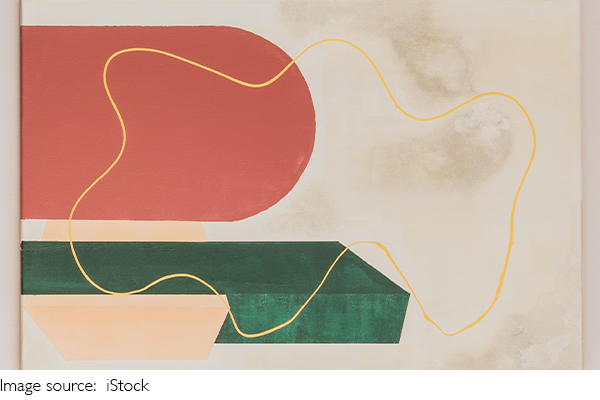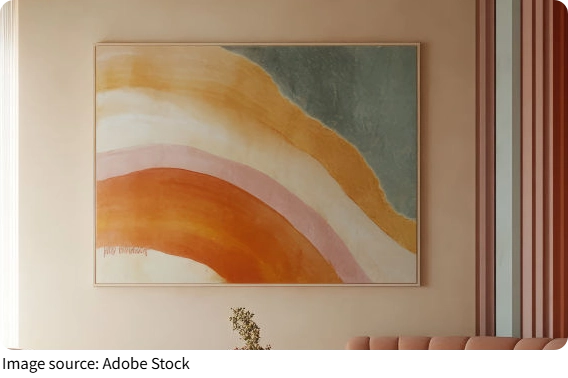The Language of Abstraction

When we think of art that tells a story, we often imagine realistic paintings—portraits, landscapes, or scenes we can clearly understand.
But abstract art doesn't work that way. It skips the "what" and goes straight to the "how it feels." Through lines, shapes, textures, and colors, it expresses emotions, ideas, and moods that words often fail to describe.
We may not always "get" an abstract painting at first glance, but we often feel something. That feeling is the doorway into deeper understanding—and that's where the magic begins.
Emotions through color
Color plays a huge role in how we communicate feelings in abstract art. Warm colors like red, orange, and yellow often show passion, energy, or warmth. Cool tones like blue, green, and purple suggest calmness, sadness, or reflection. Bright, high-contrast colors can scream for attention, while soft, muted tones can feel peaceful or nostalgic.
When we paint or look at abstract art, color is often the first thing we respond to emotionally. That's why artists choose palettes based on what they want to express—not what looks realistic, but what feels right.
Lines, movement, and emotion
Beyond color, line work is another powerful way to convey emotion. A bold, jagged line might express tension or chaos, while a gentle curve can feel soft and comforting. Thick, heavy strokes give weight to a piece, while thin, delicate lines add sensitivity.
Some abstract artists even let their bodies guide the movement of the brush. Fast strokes might reflect excitement or anger; slow, thoughtful marks might show introspection. The motion itself becomes part of the message.
Letting go of rules
One of the most freeing parts of abstract art is that there's no need to "get it right." We don't have to worry about proportions, shadows, or realistic details. Instead, we can focus on expression. This makes abstract art a great way to explore our inner thoughts and feelings—especially when we're not sure how to explain them.
For many of us, the act of creating abstract art becomes a form of release. We might not know what we're trying to say at first, but as we paint, we begin to understand ourselves better.
Symbols and hidden meanings
Even though abstract art doesn't show clear images, it often uses symbols or shapes to suggest ideas. A circle might represent wholeness or unity. A square could suggest stability or confinement. Repetition might reflect routine or obsession, while chaos in composition could speak to confusion or emotional conflict.
When we create or view abstract art, we each bring our own interpretations. That's the beauty of it—there's no single "correct" meaning. It's about what we feel when we see it.
Making abstract art ourselves
We don't need to be trained artists to start making abstract art. All we need is a blank canvas (or even just paper), some paint or pencils, and an open mind. Here are a few ways to begin:
• Mood painting: Choose colors that match your mood and fill the page freely—no planning, just emotion.
• Memory sketches: Think of a strong memory and express it using only shapes, lines, and color blocks.
• Music response: Put on a song and let your hand move with the rhythm. Let the sound guide your brush.
These simple exercises help us connect with our emotions and express them visually, without worrying about technique or perfection.
Why it connects us
Abstract art connects us to our feelings and to each other. Even when we don't use words, we can still communicate. Someone across the world may look at our painting and feel what we felt. That shared emotional language makes abstract art incredibly powerful.
And the best part? There are no limits. Each piece is a unique reflection of that moment, that emotion, and that experience.

Let's express what words can't
So Lykkers, when was the last time you picked up a brush without a plan? Whether you're new to abstract art or already exploring it, we'd love to know: what emotions do you try to express when you paint or draw? Share your thoughts or even your artwork—we're here to feel it with you.


